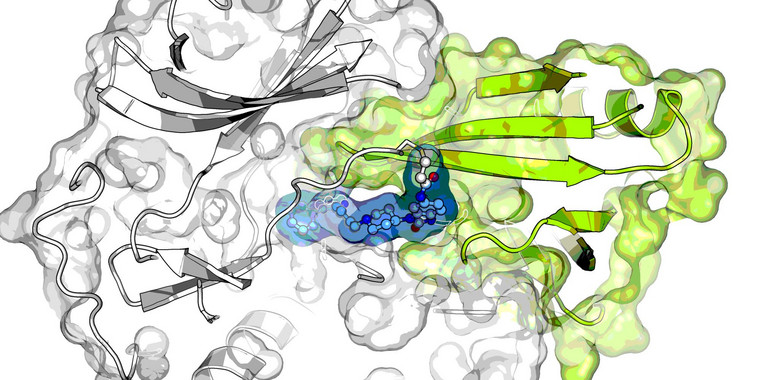04/04/2019
Print PageResearchers Jointly Develop Basis for Targeted Cancer Therapy

“This success could only be achieved through the cooperation of the various partners,” said Daniel Rauh, Professor of Medicinal Chemistry and Chemical Biology at TU Dortmund University, adding that “in a few years’ time, the new active substance could become an effective drug.” Due to its aggressiveness and high resistance, pancreatic cancer has unfortunately thus far proven to be insufficiently treatable. This is the starting point of Rauh’s research: By means of computer modeling, he and his team developed the new inhibitor, which is designed to disrupt the functioning of cancer cells. “Explained in a simple analogy, if you remove the spark plugs from a car, it won’t start anymore. The same applies to the tumor cell,” said Rauh, “its functioning is specifically disturbed.”
Success through collaboration within the University Alliance Ruhr
Designing and manufacturing the new active substance was a great success in itself. However, to make further progress, the chemists and structural biologists from Dortmund sought support from other researchers. In order to test the potential active substance, they worked together with physicians from Essen and Bochum: Professor Jens Siveke from the German Cancer Consortium at the West German Cancer Centre at Essen University Hospital is an expert on pancreatic cancer; Professor Stephan Hahn and his team at Ruhr-Universität Bochum were able to test the active substance in vivo. For the first time, the effect observed initially only in cancer cell models could also be demonstrated in the living system, in this case in mice. By the way, the researchers chose the name of the new active substance, borussertib, as a reference to their favorite football club.
New insights into the effect of the inhibitor
Another success of the collaboration: The team was able to visualize the crystal structure of the disease-causing cells three-dimensionally for the first time. Professor Rauh explained what this means: “Imagine a lock and a key. If I know exactly what the lock looks like and how it works, I can make a suitable key for it.” In this case, the lock is a dysregulated protein molecule and the key is the new active substance. “In this way, we have gained valuable insights into the mechanism of action of the inhibitor at the atomic level,” said Rauh. The focus of further research is now on optimizing the new active substance in order to further develop it for clinical testing. This work will be carried out at the Drug Discovery Hub Dortmund (DDHD).
The joint research was funded by the Mercator Research Center Ruhr (MERCUR) and supported by the Lead Discovery Center GmbH and IfADo – Leibniz Research Centre for Working Environment and Human Factors in Dortmund. MERCUR promotes cooperation between Ruhr-Universität Bochum, TU Dortmund University and the University of Duisburg-Essen, which have been working closely together since 2007 under the umbrella of the University Alliance Ruhr (UA Ruhr).
Online version of the article in the journal “Cancer Research”